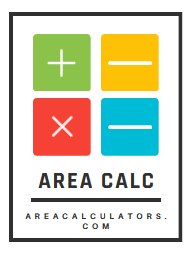In the petroleum industry, understanding the density of crude oil and petroleum products is crucial for storage, transportation, and refining processes. The API to Density Calculator provides a quick and accurate method to convert API gravity—a measure of how heavy or light a petroleum liquid is compared to water—into density values. This tool is essential for engineers, technicians, and professionals who need to make informed decisions based on the physical properties of petroleum fluids.
What Is API Gravity?
API gravity is a measure developed by the American Petroleum Institute to compare the density of petroleum liquids to water. It is expressed in degrees (°API) and is calculated using the specific gravity (SG) of the fluid:
API Gravity (°API) = (141.5 / SG) - 131.5
Where:
-
SG is the specific gravity of the fluid at 60°F (15.6°C).
A higher API gravity indicates a lighter fluid, while a lower API gravity indicates a heavier fluid. For example:
-
Light crude oil: API gravity > 31.1°
-
Medium crude oil: API gravity between 22.3° and 31.1°
-
Heavy crude oil: API gravity < 22.3°
Why Convert API Gravity to Density?
While API gravity provides a relative measure, density offers an absolute value that is essential for various calculations, including:
-
Determining mass flow rates
-
Designing storage tanks
-
Calculating transportation costs
-
Assessing refining yields
Converting API gravity to density allows for more precise engineering and economic evaluations.
How the API to Density Calculator Works
The calculator uses the following formula to convert API gravity to density:
Density (kg/m³) = (141.5 / (API + 131.5)) × 999.016
Where:
-
API is the API gravity of the fluid.
-
999.016 kg/m³ is the density of water at 60°F (15.6°C), the standard reference temperature.
This formula rearranges the API gravity equation to solve for density, providing results in kilograms per cubic meter (kg/m³). The calculator can also convert the result into other units such as pounds per cubic foot (lb/ft³) or grams per cubic centimeter (g/cm³) as needed.
Example Calculation
Let's calculate the density of a petroleum fluid with an API gravity of 35°:
Density = (141.5 / (35 + 131.5)) × 999.016
Density = (141.5 / 166.5) × 999.016
Density ≈ 0.8498 × 999.016
Density ≈ 848.5 kg/m³
This result indicates that the fluid has a density of approximately 848.5 kg/m³ at 60°F.
Applications of the API to Density Calculator
The API to Density Calculator is widely used in various sectors of the petroleum industry:
-
Refining: To determine the yield of different products based on crude oil density.
-
Transportation: To calculate pipeline flow rates and shipping weights.
-
Storage: To design storage facilities that can handle specific fluid densities.
-
Quality Control: To verify the consistency and quality of petroleum products.
Benefits of Using the API to Density Calculator
-
Accuracy: Provides precise density values essential for engineering calculations.
-
Efficiency: Saves time by automating complex conversions.
-
Versatility: Supports multiple units of measurement.
-
User-Friendly: Simplifies the conversion process with an intuitive interface.
Common Mistakes to Avoid
-
Incorrect Temperature Reference: Ensure that API gravity is measured at 60°F (15.6°C) to maintain consistency.
-
Unit Conversion Errors: Double-check unit conversions when switching between kg/m³, lb/ft³, and g/cm³.
-
Neglecting Temperature Effects: Remember that density can vary with temperature; always use standard reference conditions unless adjustments are made.
Tips for Accurate Measurements
-
Use Calibrated Instruments: Ensure that hydrometers and thermometers are properly calibrated.
-
Sample Homogeneity: Mix samples thoroughly to obtain representative measurements.
-
Temperature Control: Measure and maintain the sample at 60°F (15.6°C) during testing.
FAQs:
Contents [hide]
1. What is API gravity?
API gravity is a measure of how heavy or light a petroleum liquid is compared to water, expressed in degrees (°API).
2. Why is API gravity important?
It helps classify petroleum liquids and assess their quality and market value.
3. How do I convert API gravity to density?
Use the formula: Density = (141.5 / (API + 131.5)) × 999.016 kg/m³.
4. Can I convert density back to API gravity?
Yes. Use the formula: API = (141.5 / SG) - 131.5, where SG is the specific gravity.
5. What is the standard reference temperature for these calculations?
60°F (15.6°C) is the standard reference temperature.
Conclusion:
The API to Density Calculator is an essential tool for professionals in the petroleum industry, providing quick and accurate conversions from API gravity to density. By understanding and utilizing this calculator, you can enhance the precision of your operations, ensure compliance with industry standards, and make informed decisions based on reliable data.
